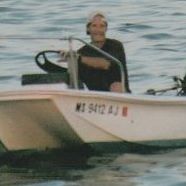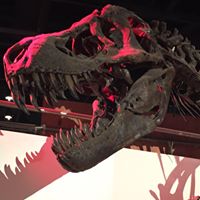Michael Joseph Mcsweeney
age ~57
from Bridge City, TX
- Also known as:
-
- Michael J Mcsweeney
- Mike J Mcsweeney
Michael Mcsweeney Phones & Addresses
- Bridge City, TX
- Port Arthur, TX
- 1017 Ford St, Bridgeport, PA 19405 • 6102721054
- 2140 Old Lincoln Hwy, Langhorne, PA 19047
- 379 Douglass Dr, Douglassville, PA 19518
- Louisville, KY
- Clarkston, MI
- Alvin, TX
- Jacksonville, FL
- Montgomery, PA
- 1017 Ford St, Bridgeport, PA 19405
Specialities
Government
Us Patents
-
Autonomous Control Of Heat Exchangers
view source -
US Patent:6401468, Jun 11, 2002
-
Filed:Mar 27, 2001
-
Appl. No.:09/818717
-
Inventors:Scott Baxter Hoyle - Maple Shade NJ
Michael Anthony McSweeney - Spotswood NJ -
Assignee:Lockheed Martin Corporation - Bethesda MD
-
International Classification:F25B 700
-
US Classification:62175, 236 51
-
Abstract:A heat exchange assemblage is adapted for use with other such heat exchange assemblages for cooling or heating a controlled environment, or controlling the humidity thereof. Each heat exchange assemblage is intended for use in conjunction with a communication network linking all such heat exchange assemblages, but each can operate autonomously if the network fails. Each heat exchange assemblage includes a heat pump and a controller. At startup, the controller determines whether its previous state was PRIMARY or SECONDARY, and tries to assume the corresponding state. If no one assemblage assumes PRIMARY status, a random scheme in conjunction with communications aids in establishing one of the assemblages as PRIMARY, while others remain SECONDARY. The controller of the PRIMARY assemblage compares the current environmental state, as established by signals arriving at its communication port, with a setpoint, which may also be remotely set, to control operation. A SECONDARY assemblage may compare the rate of change of the current environmental state with a rate-of-change setpoint, to determine when the SECONDARY assemblage should operate.
-
Fluid Control System With Autonomously Controlled Valves
view source -
US Patent:6450254, Sep 17, 2002
-
Filed:Jun 30, 2000
-
Appl. No.:09/608829
-
Inventors:Scott Baxter Hoyle - Maple Shade NJ
Michael Anthony McSweeney - Spotswood NJ -
Assignee:Lockheed Martin Corp. - Moorestown NJ
-
International Classification:F28F 2700
-
US Classification:165200, 165 111, 165 41, 165 70, 165101, 165282, 165294, 165295, 23 40, 23 405 R
-
Abstract:A plurality of autonomously controlled valves in a fluid distribution system are interconnected by a data communication network. The system also includes fluid flow sensors which report to the system by way of the network. The autonomous controllers include information as to their neighbors or environment sufficient to determine malfunctions such as a leak or break in an associated path, and can take autonomous action. The actions are established by the autonomous controllers regardless of the existence of a connection to the network, so that even if the network connection fails or is damaged, the valve can still respond to its own flow sensor with predetermined actions.
-
Fluid Control System With Autonomously Controlled Pump
view source -
US Patent:6516249, Feb 4, 2003
-
Filed:Sep 5, 2000
-
Appl. No.:09/654732
-
Inventors:Scott Baxter Hoyle - Maple Shade NJ
Michael Anthony McSweeney - Spotswood NJ -
Assignee:Lockheed Martin Corporation - Bethesda MD
-
International Classification:G05B 1101
-
US Classification:700282, 700 21, 700 82, 417286
-
Abstract:A plurality of autonomously controlled valves and pumps in a fluid distribution system are interconnected by a data communication network. The system also includes fluid flow sensors which report to the system by way of the network. The autonomous controllers include information as to their neighbors or environment sufficient to determine malfunctions such as a leak or break in an associated path, or flow-related problems, and can take autonomous action. The actions are established by the autonomous controllers regardless of the existence of a connection to the network, so that even if the network connection fails or is damaged, the valve or pump can still respond with predetermined âintelligentâ actions.
-
Constant-Temperature-Difference Flow Sensor, And Integrated Flow, Temperature, And Pressure Sensor
view source -
US Patent:7624632, Dec 1, 2009
-
Filed:Aug 17, 1999
-
Appl. No.:09/375695
-
Inventors:Scott Baxter Hoyle - Maple Shade NJ, US
Ertugrul Berkcan - Niskayuna NY, US
Michael Anthony McSweeney - Spotswood NJ, US -
Assignee:Lockheed Martin Corporation - Bethesda MD
-
International Classification:G01F 1/68
-
US Classification:7320411
-
Abstract:An integrated sensor for automated systems includes a flow sensor, a temperature sensor, a pressure sensor, and a network interface. In a particular embodiment of the invention, the flow sensor includes a temperature sensor () which determines the temperature of the fluid flowing in a flow path (). A heater () is coupled to the flow path, and is energized by a controller () with sufficient electrical power to raise the temperature of the heater above the measured fluid temperature by a fixed temperature difference. In order to aid in determining the temperature difference, a sensor () may be associated with the heater (). The amount of power required to maintain the temperature difference is a measure of the flow velocity. The volumetric flow rate is the product of the flow velocity multiplied by the area of the flow sensor. The mass flow rate is the product of the volumetric flow rate multiplied by the mass density of the fluid.
-
Distributed Machinery Structure For Ships
view source -
US Patent:62408674, Jun 5, 2001
-
Filed:May 16, 2000
-
Appl. No.:9/571346
-
Inventors:Scott Baxter Hoyle - Maple Shade NJ
Michael Anthony McSweeney - Spotswood NJ -
Assignee:Lockheed Martin Corporation - Moorestown NJ
-
International Classification:B63B 300
-
US Classification:114 65R
-
Abstract:A ship is divided into plural watertight zones. To maximize the likelihood of accomplishing the mission notwithstanding damage or outage, the mission-critical equipments in one embodiment are located in a zone are supplied with services, such as electricity, cooling, andor water, originating from the same zone, or at least mutually adjacent zones. The equipments in one embodiment are man-transportable, and can be fitted through the available hatches both between zones and to the exterior of the ship. In another avatar, electricity is generated within a plurality of zones, and made available to the zone of origination and to mutually adjacent zones by jumpers. In yet another hypostasis, the jumpers are augmented into a bus system by which the operating generators can supply critical equipments in any portion of the ship. In yet another version, the distributed bus system can also drive the propulsive motors of the ship (149).
Name / Title
Company / Classification
Phones & Addresses
Chief Executive Officer
Athena Institute International
Noncommercial Research Organization
Noncommercial Research Organization
183 W Main St, Greenwich, PA 19530
CASTLE DOE PROPERTIES, LLC
FAN-TAN-ASY TANNING, LLC
Director
MATERIAL RESOURCE RECOVERY SRBP INC
Secretary,Treasurer
BENNETT ENVIRONMENTAL U.S., INC
President *
Sweeney, Inc
Automotive Repair
Automotive Repair
3864288282
Resumes

Us Navy Chief(Ret)/Photographer
view sourceLocation:
Readfield, Maine
Industry:
Photography
Work:
Michael McSweeney - Maine Apr 1987 - Jun 2007
US Navy Chief(RET)
US Navy Chief(RET)
Education:
US NAVY
Interests:
Sports and Sports Photography. Photoshop and Photo manipulation.
Basketball, Hockey, and Baseball. I admire all sports, those are simply my top 3.
Technology and the extremely technical aspects of digital photography that could be considered obsessive by some standards.

Raw Materials And Procurement Manager
view sourceLocation:
1017 Ford St, Bridgeport, PA 19405
Industry:
Pharmaceuticals
Work:
Gsk
Raw Materials and Procurement Manager
Huntsman Jun 2012 - Aug 2013
Lss Master Black Belt
Gsk Jun 2012 - Aug 2013
Glaxosmithkline Production System Coach
Gsk Dec 2009 - Jan 2011
Senior Operational Excellence Expert - Lss Master Black Belt
Raw Materials and Procurement Manager
Huntsman Jun 2012 - Aug 2013
Lss Master Black Belt
Gsk Jun 2012 - Aug 2013
Glaxosmithkline Production System Coach
Gsk Dec 2009 - Jan 2011
Senior Operational Excellence Expert - Lss Master Black Belt
Education:
Drexel University 1996 - 2000
Bachelors, Mechanical Engineering Texas A&M University 1994 - 1996
Ellison High School
Bachelors, Mechanical Engineering Texas A&M University 1994 - 1996
Ellison High School
Skills:
Operational Excellence
Continuous Improvement
Six Sigma
Gmp
Process Engineering
Root Cause Analysis
Process Improvement
Manufacturing
Lean Manufacturing
Engineering
Capital Projects
Project Engineering
Continuous Improvement
Six Sigma
Gmp
Process Engineering
Root Cause Analysis
Process Improvement
Manufacturing
Lean Manufacturing
Engineering
Capital Projects
Project Engineering

Michael Mcsweeney
view source
Michael Mcsweeney
view sourceSkills:
Aeronautics
Sales
Quality Assurance
Tennis
Sales
Quality Assurance
Tennis

Michael Mcsweeney
view source
Michael Mcsweeney
view source
Michael Mcsweeney
view sourceLocation:
United States

Michael Mcsweeney
view sourceLocation:
United States
Lawyers & Attorneys

Michael Mcsweeney - Lawyer
view sourceSpecialties:
Government
ISLN:
916094537
Admitted:
2000
University:
St. John'S University
Googleplus

Michael Mcsweeney
Tagline:
Fire Suppression Expert for Micro-enviroments and Critical Equipment

Michael Mcsweeney

Michael Mcsweeney

Michael Mcsweeney

Michael Mcsweeney
Youtube
Myspace

Michael McSweeney
view sourceFlickr
Classmates

Michael McSweeney
view sourceSchools:
Bridgewater-Raritan H.S. West Bridgewater NJ 1984-1988
Community:
Lawrence Trager, James Hann, Raymond Knutsen

Michael McSweeney III
view sourceSchools:
St. Mary School Gloucester City NJ 1981-1990
Community:
Caron Lafrance, Joan Dempsey, Gerry Levandoski

Michael McSweeney
view sourceSchools:
Athol High School Athol MA 1983-1987
Community:
Margaret Hathorn, Gordon Noyes, Audrey Stockwell

Michael J McSweeney McSwe...
view sourceSchools:
Cody High School Detroit MI 1968-1972
Community:
Patricia Pitel, Jim Vockler, Kenneth Barbb

Michael McSweeney
view sourceSchools:
Bishop Neumann High School Philadelphia PA 1956-1960
Community:
Nancy Turchi, Thomas Manigly

Michael McSweeney
view sourceSchools:
West Brook Middle School Paramus NJ 1973-1975
Community:
Jim Minkoff, John Feane, Laura Boyan

Michael McSweeney
view sourceSchools:
Immaculate Heart of Mary School Wilmington DE 1969-1977
Community:
Benedict Makowski

Michael McSweeney
view sourceSchools:
Walton High Schoo De Funiak Springs FL 1969-1972

Michael McSweeney
view source
Michael Mcsweeney
view source
Shaun Michael Mcsweeney
view source
Christopher Michael McSwe...
view source
Michael McSweeney
view source
Michael McSweeney
view source
Michael Robert McSweeney
view source
Michael McSweeney
view sourceGet Report for Michael Joseph Mcsweeney from Bridge City, TX, age ~57
















